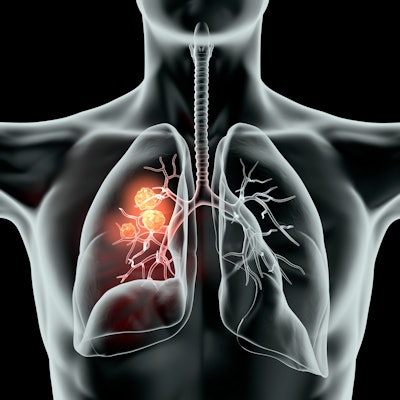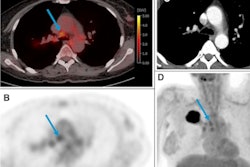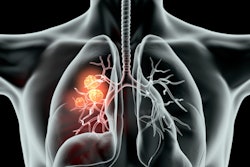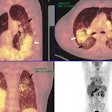
Patients who undergo PET/CT exams prior to surgery for non-small cell lung cancer (NSCLC) have improved chances of survival, according to a study published June 21 in Radiology.
Researchers in Taiwan analyzed imaging from a large group of patients with resectable stage I-IIIB NSCLC who underwent preoperative F-18 FDG PET/CT imaging. They found patients with more advanced cancer who had preoperative PET/CT scans had a lower risk of death.
"Preoperative PET/CT should be encouraged in patients with stage IIIA-IIIB NSCLC to reduce the risk of unnecessary surgery and more accurately stage advanced disease," wrote corresponding author Dr. Szu-Yuan Wu, a radiation oncologist at Fu Jen Catholic University in Taipei.
Worldwide, lung cancer is the second most commonly diagnosed cancer, with NSCLC as the most common type. Five-year survival rates drop with the severity of disease and how much the cancer has spread, with rates ranging from 7% to 60%.
Despite the widespread use of F-18 FDG PET/CT as a routine staging tool, its value in routine use over other modalities in lung cancer patients remains unknown. There are no large randomized controlled trials that show routine use of PET/CT improves survival or reduces the rate of NSCLC, according to the authors.
In this work, the researchers aimed to provide insight on this issue in a matched study of individuals who received PET/CT imaging compared to those who did not.
Wu and colleagues gathered data from Taiwan's national Health and Welfare Data Center on 6,754 patients with a mean age of 64 years old who underwent PET/CT prior to surgery to remove biopsy-proven NSCLC between January 2009 and December 2018. They matched these individuals with equal numbers in a control group who did not undergo PET/CT imaging (but rather CT, contrast-enhanced brain MRI, or bronchoscopy).
The primary outcome was all-cause mortality, which was calculated from the date of a patient's initial PET/CT scan to date of death. The last patient follow-up was on December 31, 2019.
According to the analysis, the largest correlation between preoperative PET/CT and all-cause mortality was seen in patients with stage IIIB NSCLC, with a hazard ratio (HR) of 0.80 (p < 0.01), followed by patients with stage IIIA NSCLC, with an HR of 0.90 (p = 0.02).
| 5-year overall survival in preoperative PET/CT patients with stage III NSCLC | ||
| Non-PET/CT (n = 6,754) | Preoperative PET/CT (n = 6,754) | |
| Stage IIIA | 54.5% | 57.1% |
| Stage IIIB | 41.4% | 50.4% |
Importantly, among patients with early NSCLC (stages I-II) who had F-18 FDG PET/CT scans prior to thoracic surgery, the researchers found no association between the case and control groups for overall survival.
"The longer overall survival of the patients with stage IIIA-IIIB NSCLC in the preoperative PET/CT group can be attributed to a higher staging accuracy for advanced stages compared with those in the nonpreoperative FDG PET/CT group," the authors wrote.
The researchers noted limitations of the study, namely that treatment plans before and after PET/CT were not available and that the criteria for surgery likely varied among thoracic surgeons. Also, although differences between the groups were statistically significant (p < 0.05), the overall effect size of PET/CT was small.
Nonetheless, the authors suggest preoperative F-18 FDG PET/CT should be encouraged in patients with stage IIIA-IIIB NSCLC to more accurately stage advanced disease, and perhaps excluded in patients with resectable stage I-II NSCLC.
"A large randomized controlled trial would be necessary to confirm these findings," Wu and colleagues concluded.





















